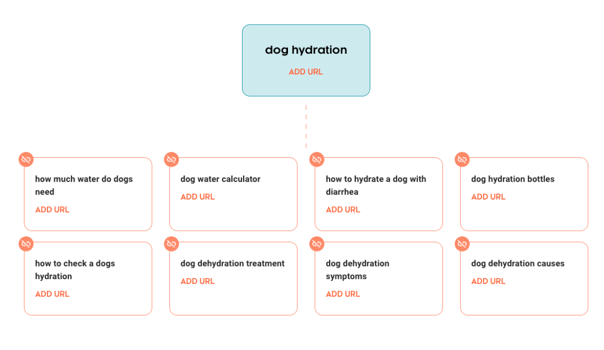Have you poured your heart and soul into a blog post — only to get zero traffic, clicks or comments? To produce juicy, relevant content, you need to know who you’re talking to, what they want and how to help them find it.
Relevant content is content that’s built with your audience in mind. It’s about matching the intent behind a search query, so your website delivers helpful answers.
So how do you write relevant, SEO-friendly content?
You might have an idea for an article that’s clever and timely, but is it?
Interests change quickly. Your content may have dominated SERPs two years ago. But as search intent changes (and algorithms get smarter), it dropped off the map. Bummer.
Maintaining relevance in content marketing is a blend of art and strategy, creativity and keywords. Today, we’ll review some practical guidelines to help you create thoughtful, relevant content.
How to Write Relevant Content
First, a reminder:
Definition of relevant:
[ rel-uh-vuhnt ]
adjective
bearing upon or connected with the matter in hand; pertinent:Synonyms for relevant:
applicable, fitting, appropriate, suitable
Relevant content can be timeless and evergreen or of-the-moment. Ultimately, the content your target audience wants is the only content that matters.
Follow these steps to learn how to write relevant, quality content that speaks to your audience meaningfully:
- Get to know your audience
- Use SEO tools
- Scan the SERPs
- Be creative
- Evaluate your results
1. Get to Know Your Audience
Remember: It’s not about you. You should certainly build great content around your product or service.
However, when writing with search in mind, always focus on your customers’ needs first. If you prioritize selling over delivering value, it’s easy to appear opportunistic and, well, spammy.
So what’s the first step? Know your audience.
- Who are they? Creating buyer personas
- What do they want? Tracking customer interests
- What do they need? Addressing pain points
Who Are They? Creating Buyer Personas
It’s an exercise in futility to market a product or service without a “face” attached to it. Without identifying your audience, your marketing approach can be extremely unfocused, resulting in unclear branding and haphazard campaigns.
Creating personalized campaigns increases response rates because targeted content works. It’s that simple.
Developing buyer personas is the first step in identifying and understanding your audience. Buyer personas are fictional snapshots depicting your ideal customer's characteristics. Once you’ve defined who you’re talking to, you can focus on how to write website content that helps them.
You may have several buyer personas that you market to. But once you create separate customer profiles with likes and dislikes, demographics and pain points, you are well on your way to crafting targeted content that speaks directly to them.
What Do They Want? Tracking Customer Interests
Buyer personas create a snapshot of your customers frozen in time. Add to that snapshot by using AI tools that dynamically track your customers’ interests based on their digital footprint.
Personalize’s AI engine crunches data like visit frequency, recency and time on page to reveal what customers are interested in right now.
This information helps you promote the right product, service or content at just the right time, uniquely capturing needs and increasing response rates.
What Do They Need? Addressing Pain Points
People are always looking for solutions to their problems in some form. Here are a few things to keep in mind while discovering customer pain points:
- Successful content creators constantly discover new problems — or look for fresh ways to solve old ones. What issues are your readers trying to solve? Look to Google’s “People Also Ask” section and related searches on the SERP page to uncover questions people commonly search around your topic.
- Know your product’s unique value proposition (UVP) and how it stacks up against competitors. Confidently drill into your UVPs so readers know exactly what they have to gain by doing business with you.
- Remember that your audience comprises people in various stages of the buyer's journey. The content you write should align with each of those stages. Creating several articles addressing a similar topic is not uncommon when speaking to customers who are low, medium or high in the sales funnel. (Think purely educational content vs. case studies and price comparisons for customers further down the funnel.)
- Address pain points in a way an average reader understands. Don’t use an abundance of industry jargon unless you're addressing customers who are further down the sales funnel and familiar with specific terminology.
2. Use SEO Tools
Search engine optimization (SEO) tools help you discover what content to pursue based on search volumes and competition. They also reveal the specific keywords that make it easy for your audience to find your content once it’s published.
Topic Cluster Tools
Once you’ve determined who your customers are, what they want and how you can solve their pain points, it’s time to form your content strategy.
Creating pillar pages and linking related content enables you to categorize your content so that readers can find it in an organized, logical way. Pillar pages and content that supports those topics (subtopics) provide helpful information and build a knowledge base that creates value for your brand.
Known as topic clusters, grouping content helps you organize content ideas, improve SEO performance and prioritize new content creation. You can use topic clusters to categorize the content you already have and identify new content opportunities that drive traffic and build online authority.
Tools like Blueprint SEO can help you create and manage your topic clusters and discover information gaps to pursue.

Keyword Tools
It’s all about the keywords, isn't it? Selecting the right keywords is an essential step in relevant content creation.
“Keyword” sometimes seems like a magical term when, in fact, it’s just a reference to what words people use to find the information they want.
Keyword tools like Semrush, Moz and Google Keyword Planner help you brainstorm new keyword ideas and gauge the difficulty of ranking for these terms. You can also uncover related search terms and subtopics to craft more well-rounded, helpful content.
Of course, it’s important to prioritize search intent over keywords alone.
For example, people searching for “property investment strategies” and “property investment tips” are likely looking for the same information. Before creating separate articles targeting similar topics, go back to the search engine results page (SERP) to evaluate the results.
3. Scan the SERPs
Want a quick way to find out what type of content your audience finds relevant to their needs? Survey the SERPs.
First, search for your topic. Are the results similar to your content idea? Does your search term point to resource lists rather than actual content?
SERPs show content that matches the search intent and gets the most clicks, so it’s a reliable indicator of the content people are looking for.
SERPs are another way to evaluate competitive offerings and determine if there are content gaps relevant to your audience that you should explore.
They also reveal the content people are looking for in the ways they’re looking for them. What you think is a valid search term may be antiquated, or there may be alternative ways people are searching for the information you want to provide.
4. Be Creative
Many SERPs contain thousands, if not millions, of results. How can you create content that satisfies a search result but stands out from the competition?
- Be different: Sometimes this is easier said than done, but think outside the box. Even using a humble thesaurus helps find eye-catching ways to title your topic in ways the competition isn’t. Tools like headline generators shake up your thought process (and provide a few laughs!) and get your creative juices flowing.
- Put yourself in your customers’ shoes: What angle would you find helpful to search for this information? Writing in a way that people speak makes the desired information easy to understand and digest. It’s also an effective way to incorporate long-tail keywords that help build traffic.
5. Test Your Text
Once you’ve finished your content, it’s time for some objective analysis.
Semrush’s SEO Content Template compares your finished content to competitors using similar keywords. It analyzes competitors’ content and offers keyword suggestions to help your article rank against those competitors.
It should also go without saying that checking your text for errors is a must. Online tools like Grammarly point out spelling, grammar and usage errors and offer suggestions to improve readability. This service is not free, but it is priceless.
Need Help Creating Relevant Content? Human Can Help.
Search algorithms are getting smarter. Has your content strategy kept up?
Writing good, relevant content is not done by the seat of your pants. Creating relevant content requires uncovering consumer needs to craft content they’ll find, use and share.
At Human, we specialize in SEO-driven content strategy and creation to help our clients build online authority and get found for their most important topics.
We even built software to support our client’s topic cluster strategies — Blueprint SEO.
Ready to create relevant content that gets in front of the right audience? Schedule your free consultation with a Human today.



